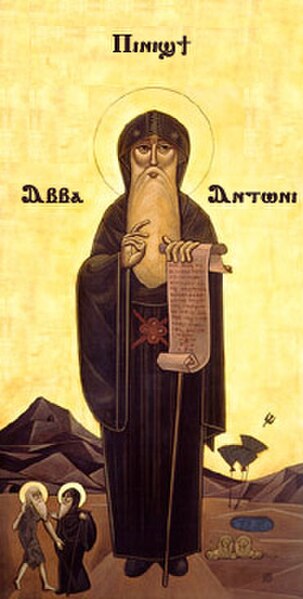Temptation of Saint Anthony in visual arts
The Temptation of Saint Anthony is an often-repeated subject in the history of art and literature, concerning the supernatural temptation reportedly faced by Saint Anthony the Great during his sojourn in the Egyptian desert. Anthony's temptation is first discussed by Athanasius of Alexandria, Anthony's contemporary, and from then became a popular theme in Western culture.
Matthias Grünewald, inner right wing of the Isenheim Altarpiece depicting the Temptation of St. Anthony, 1512-1516 (oil on panel)
The Temptation of Saint Anthony, 1487–88, by the young Michelangelo, copying Martin Schongauer's engraving
The Temptation of St. Anthony, by Joos van Craesbeeck, c. 1650, clearly recalling the Bosch treatments.
Anthony the Great was a Christian monk from Egypt, revered since his death as a saint. He is distinguished from other saints named Anthony, such as Anthony of Padua, by various epithets: Anthony of Egypt, Anthony the Abbot, Anthony of the Desert, Anthony the Anchorite, Anthony the Hermit, and Anthony of Thebes. For his importance among the Desert Fathers and to all later Christian monasticism, he is also known as the Father of All Monks. His feast day is celebrated on 17 January among the Eastern Orthodox and Catholic churches and on Tobi 22 in the Coptic calendar.
Coptic icon of Saint Anthony
Painting of Saint Anthony, a part of The Visitation with Saint Nicholas and Saint Anthony Abbot by Piero di Cosimo, c. 1480
Four tales on Anthony the Great by Vitale da Bologna, c. 1340, at the Pinacoteca Nazionale di Bologna
The Torment of Saint Anthony, copy by the young Michelangelo after an engraving by Martin Schongauer c. 1487 – c. 1489. Oil and tempera on panel. One of many artistic depictions of Saint Anthony's trials in the desert.






